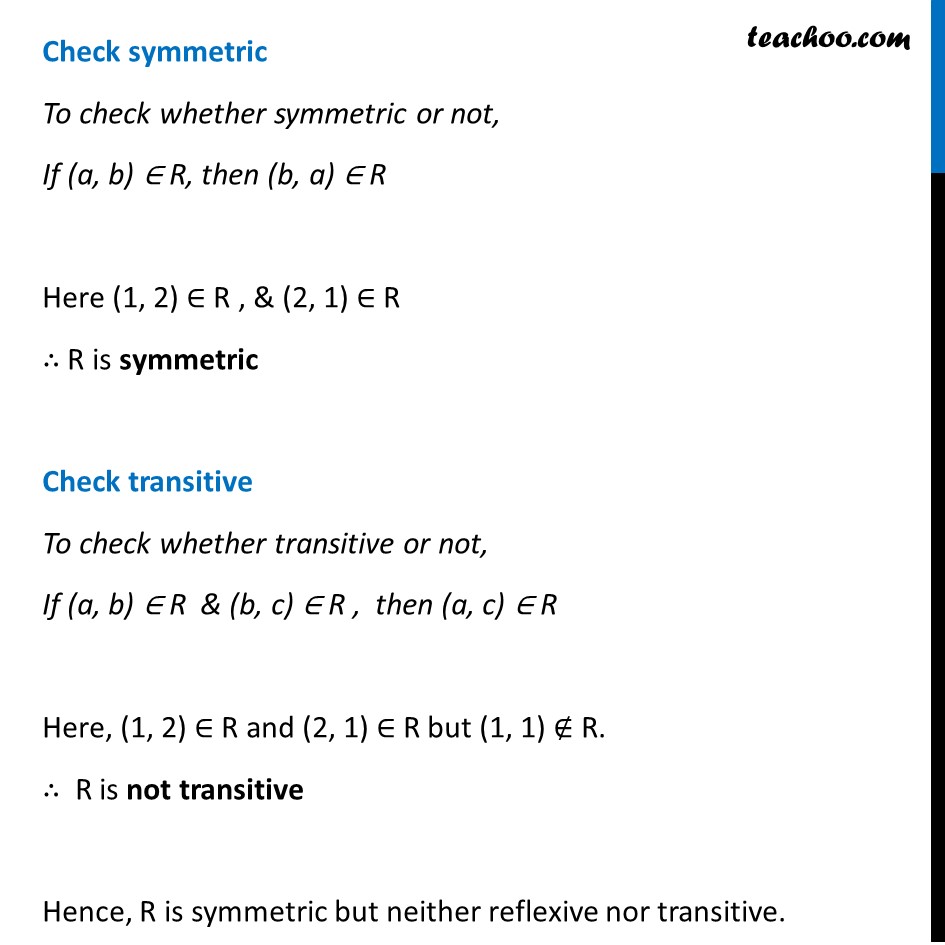

To prove relation reflexive, transitive, symmetric and equivalent
To prove relation reflexive, transitive, symmetric and equivalent
Last updated at Dec. 16, 2024 by Teachoo


Transcript
Ex 1.1, 6 Show that the relation R in the set {1, 2, 3} given by R = {(1, 2), (2, 1)} is symmetric but neither reflexive nor transitive R = {(1, 2), (2, 1)} Check Reflexive If the relation is reflexive, then (a, a) ∈ R for every a ∈ {1,2,3} Since (1, 1) ∉ R ∴ R is not reflexive Check symmetric To check whether symmetric or not, If (a, b) ∈ R, then (b, a) ∈ R Here (1, 2) ∈ R , & (2, 1) ∈ R ∴ R is symmetric Check transitive To check whether transitive or not, If (a, b) ∈ R & (b, c) ∈ R , then (a, c) ∈ R Here, (1, 2) ∈ R and (2, 1) ∈ R but (1, 1) ∉ R. ∴ R is not transitive Hence, R is symmetric but neither reflexive nor transitive.